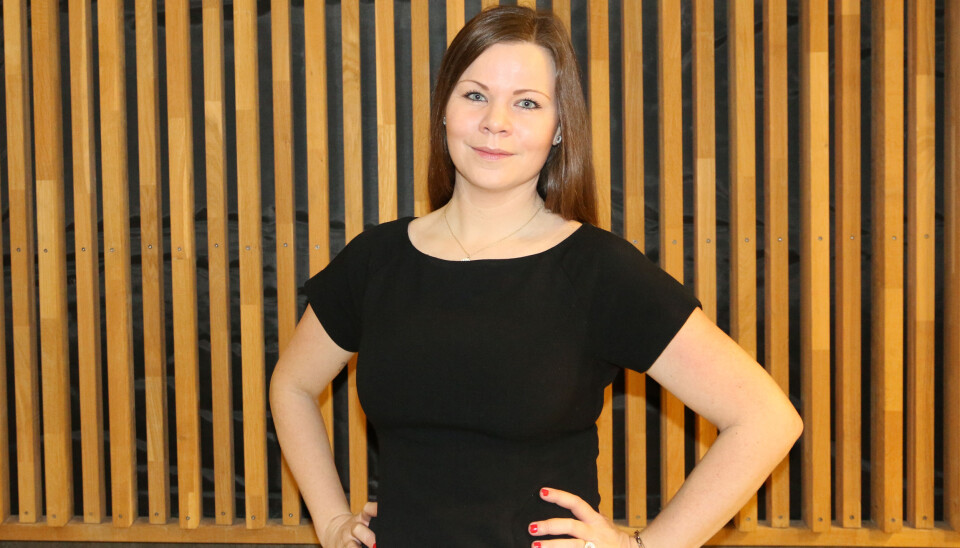This article was produced and financed by The Norwegian School of Sport Sciences - read more

Active children become healthy old people
If you are active at a very young age, you reduce the risk of heart problems and type 2 diabetes when you get old. You and your loved ones can be spared from great suffering and society from enormous costs.
These findings are presented in a study that Mette Stavnsbo defended as part of her PhD at the Norwegian School of Sport Sciences (NIH) this January.
Stavnsbo has studied how physical activity in young people affects the development of so-called “cardiometabolic risk factors” - the risk of developing type 2 diabetes or cardiovascular diseases as one gets older.
It is already known that atherosclerosis (hardening of the arteries), at least during its early stages, can develop in people as young as three years old, and such deposits are among the main causes of cardiovascular diseases.
As you get older, they gradually get worse, but the speed at which they occur depends on lifestyle.
Obviously, the risk is also affected by a lot of other things throughout life. Here, reduced risk assumes that people “live the same lives” as they would otherwise do.
Cardiovascular diseases are among the most common causes of illness and death. The first signs of atherosclerosis can be noticed very early on.
Type 2 diabetes is another type of serious disorder that also affects very many people, and which largely depends on the individual’s lifestyle.

Being more active in everyday life
In the study involving Year 5 pupils, more activity was incorporated in the everyday school life of a so-called test or intervention group.
The children, who were from various schools in the county Sogn and Fjordane, were allocated half an hour of activity three days a week in Norwegian, English and maths lessons.

One activity was maths bingo or relay races with mathematic wheels that took place outdoors.
They were also able to take an “active break” during otherwise sedentary lessons by watching a “just dance” video, for example.
A third initiative was giving the pupils an active homework assignment, such as running five times around the house or skipping the “seven times table” with a skipping rope.
Before and after the seven month testing period, the children were measured in relation to the various risk factors.
The results were positive, at least for the children who needed it most: A number of risk factors related to the development of cardiovascular diseases were clearly reduced in the children who had the worst health profiles at the get go.
“It was as expected. This also applies to people who are much older; several studies have shown that physical activity benefits the health of those who have the worst starting point the most.”
Normally, one would expect an improvement in all participants, or at least most of them.
The fact that this didn’t happen has its own, positive explanation:
Establish habits in childhood
It turned out that the children from this Western Norwegian county were consistently and considerably more active and in better shape than “the international average child”.
“Activity levels and physical fitness are closely related to the risk of developing lifestyle diseases. Already having a poor health profile in childhood is an early warning sign of developing illness in later life. People who aren’t very active and in poor physical condition are particularly susceptible to lifestyle diseases”, says Stavnsbo.
“That is why childhood is an important period for establishing good habits, not least by engaging in physical activity to prevent lifestyle diseases.”
Comparing Norwegian children with other children around the world became possible because Stavnsbo, in addition to figures from ASK, also assembled large amounts of international reference material, a common standard for examining the health profile of children. Over 20,000 children and young people from the United States and Europe formed the basis to conduct a comparison of 14 different health variables.

More physical activity in schools
According to Stavnsbo, atherosclerosis cannot be avoided as you get older, but you can influence how quickly it develops.
“With a poor diet and an inactive lifestyle, the development of atherosclerosis will accelerate. It can, in turn, lead to cardiovascular diseases.”
Autopsies have shown that children as young as three years old develop growing signs of atherosclerosis. At the same time, studies show that children gradually become less physically active as they grow older. “Therefore, we should stimulate children into becoming more physically active. We have to create good habits at an early age”, says Mette Stavnsbo.
“In this sense, school is very important. School influences everyone, regardless of social background, religion or habits. Seen from a public health perspective, school is therefore a very important arena for physical activity.”
A simple but great investment
According to Stavnsbo, more activity in everyday school life will be a good investment, especially in the long run. Both socio-economically and individually.
“The costs of diabetes and cardiovascular diseases are enormous. Prevention is a lot cheaper than reparation”, says Stavnsbo.
But will ‘good habits’ during childhood years actually be something youth continue with? It is known that young people gradually become less active as they grow older.
“We hope and think so”, says the researcher.
“If one hour of compulsory physical activity is incorporated into primary and lower secondary schools every day, it can help more children and young people meet health authority recommendations. It’s all about finding fun and inclusive activities. Hopefully, this will also stimulate people’s desire to be more active in their spare time.”

“A bit too healthy”
The Year 5 pupils from Sogn and Fjordane were not really the most ideal subjects to use in this trial. Basically, they were too active and in good shape already. “These children were actually better than the average in Norway and not least internationally”, says Mette Stavnsbo.
Probably, this was also the reason why increased activity during the testing period had no overall effect on the risk factors; only those with the worst health profiles really gained from the increased activity.
“We reached an upper limit, so to speak, where even more activity had little effect. It also turned out that the control group was about as active as the trial group. Therefore, the premise for making a change in the group was weakened.”
Helped the inactive and girls the most
This was the reason why Stavnsbo divided the children into smaller groups, revealing that the children who had the worst health profiles at the start, improved the most during the trial period.
This also showed that girls experienced a greater effect from increased activity than boys. The main reason behind this was most likely that they were already less active and in correspondingly poor physical condition.
Several studies have shown that young people become less active as they grow older: In the spring of 2019, the so-called UngKan3 study showed that children in general have not become less active than in the past (with the exception of the Year 9 group), but they are becoming more lazy as they groCCw older.
It has also become apparent that few young people meet the recommendations of the World Health Organisation (WHO) and the Norwegian Directorate of Health (HDir) in being active at least one hour each day.
References:
Mette Stavnsbo: Cardiometabolic risk factors in children - Reference values, association with cardiorespiratory fitness and effects of the Active Smarter Kids (ASK) physical activity intervention. Doktorgradsavhandling, Norges idrettshøgskole, 2020.
Mette Stavnsbo mfl.:Effects of the Active Smarter Kids (ASK) physical activity intervention on cardiometabolic risk factors in children: A cluster-randomized controlled trial. Preventive Medicine, 2020. Doi.org/10.1016/j.ypmed.2019.105868
———
Read the Norwegian version of this article on forskning.no.

































